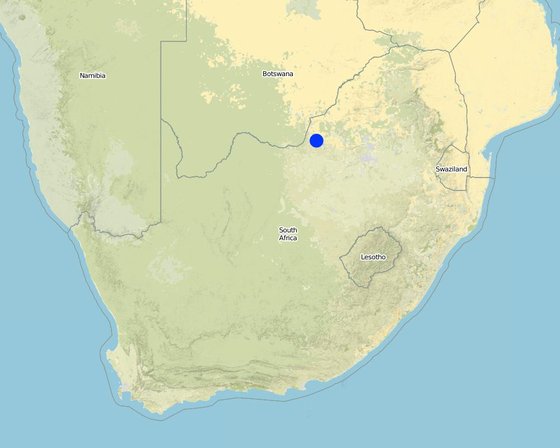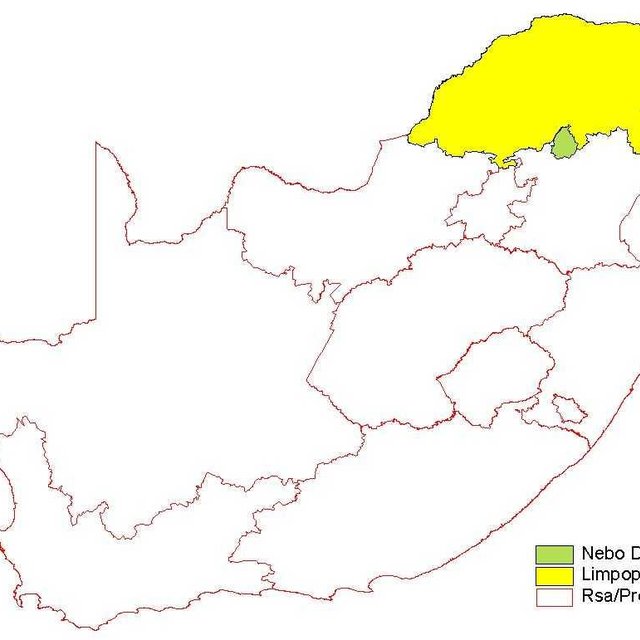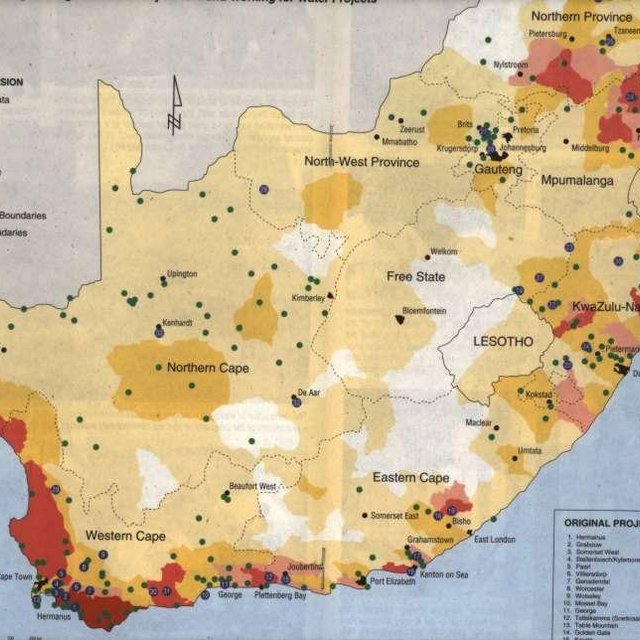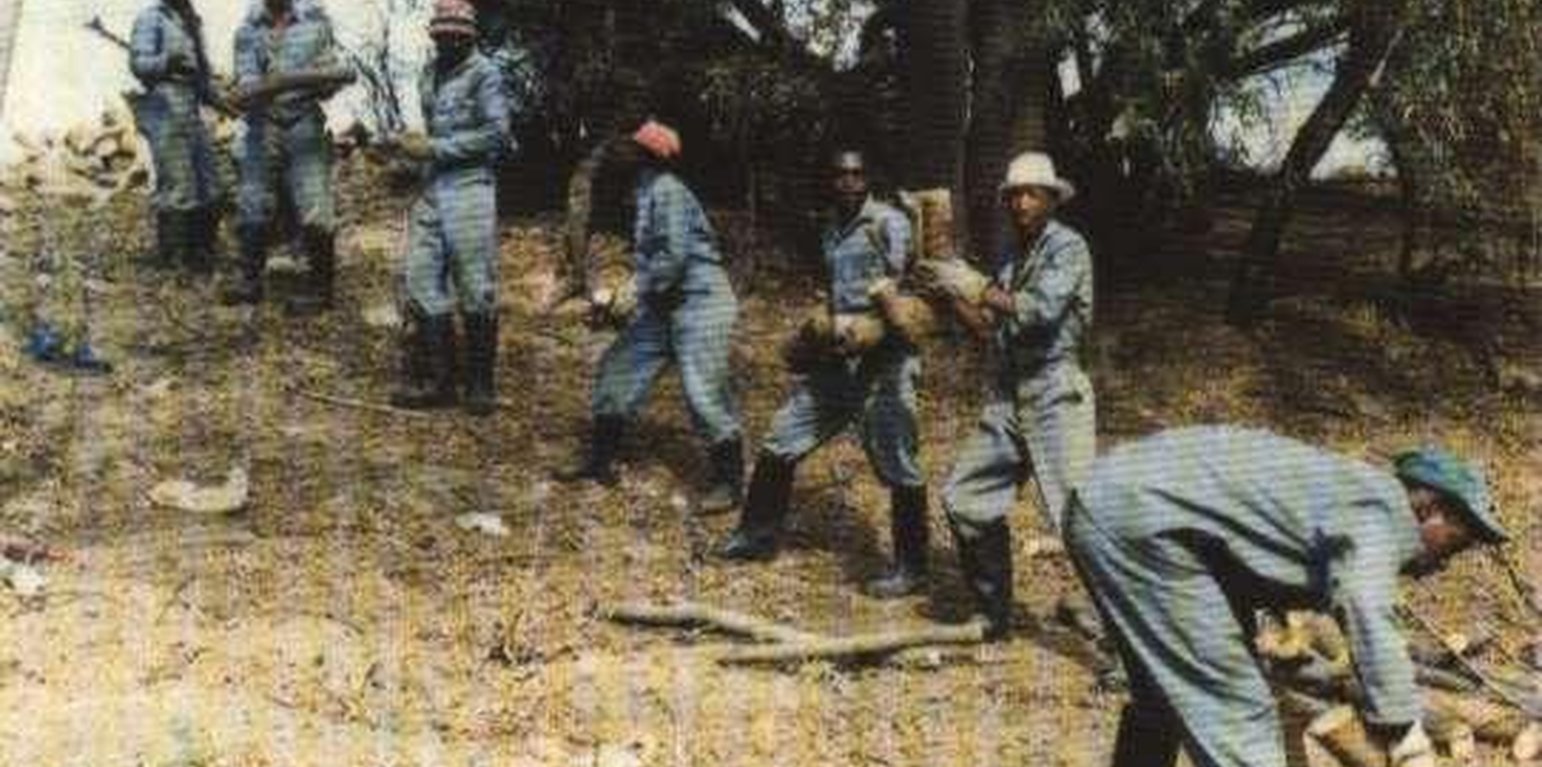Inter departmental approach
(Afrique du Sud)
Description
Eradication of invasive alien plants to enhance water sustainability by increasing run-off into dams & rivers.
Aims / objectives: Programme started in October 1995, employing previously disadvantaged unemployed people to clear invading trees in catchments and along rivers. This has been going on for approximately 4 years. The leading department is the Department of Water Affairs and Forestry but they have been in partnerships with a number of other departments e.g. Land Affairs, Agriculture, South African National Parks, Welfare etc. Labour intensive methods are used to clear trees and apply herbicides to prevent regrowth. Where in sensitive areas, rehabilitation techniques are employed e.g. sowing grass seeds and re-establishing indigenous plants. There are also some wetland rehabilitation projects across the country where engineering techniques are used to rehabilitate wetlands. The Inter-departmental approach is unique in the country, but very important as objectives span all departments. The work is done on farmland, community land, private company land and governmental land. New laws will force landowners to clear large stands of alien trees in future and this programme offers landowners a way of clearing their land before the law is enforced. The approach is to use labour intensive clearing techniques to provide jobs and also tackle an ecological problem. In so doing, the programme tackles socio-economic issues and environmental issues. The major objective is to create sustainable water supplies in a drought prone country; hence - Working for Water'- (providing work to unemployed and increasing water availability).
Lieu

Lieu: All 9 Provinces, Afrique du Sud
Géo-référence des sites sélectionnés
Date de démarrage: 1995
Année de fin de l'Approche: 2015
Type d'Approche
-
traditionnel/ autochtone
-
initiative/ innovation récente locale
-
fondé sur un projet/ programme

Map

Map where Working for Water have projects.
Objectifs de l'approche et environnement favorable
Principaux objectifs de l'Approche
The Approach focused mainly on SLM with other activities (Social development & job creation; AIDS/HIV awareness, cr??ches, secondary industries)
- To clear invasive alien plants & re-establish indigenous vegetation. - To create jobs - To find markets for wood products - To promote productive potential of land - Facilitate economic empowerment
The SLM Approach addressed the following problems: Aggressively invading alien plants; wetland rehabilitation; biodiversity impacts; social development & empowerment.
Conditions favorisant la mise en oeuvre de la/(des) Technologie(s) appliquée(s) sous l'Approche
Conditions entravant la mise en oeuvre de la/(des) Technologie(s) appliquée(s) sous l'Approche
-
Disponibilité/ accès aux ressources et services financiers: Expensive to clear large tracts of land
Treatment through the SLM Approach: SA is drought prone, sold the idea on potential water benefits.
-
Cadre institutionnel: Responsibly to clear plants falls between 2 departments - Environment & Agriculture
Treatment through the SLM Approach: On back of water benefit, Department of Water Affairs began clearing
-
Cadre juridique (régime foncier, droits d'utilisation des terres et de l'eau): Law was not enforced and also not defendable in court.
Treatment through the SLM Approach: Water law & Agricultural resources Act is under review to be more comprehensive.
The existing land ownership, land use rights / water rights moderately hindered the approach implementation Difficult to explain to landowner why we want to chop trees on their property, does not have to let us on.
-
Autre: Perceptions: People perceive a tree as good - do not distinguish between alien & indigenous
Treatment through the SLM Approach: Massive public awareness campaign.
Participation et rôles des parties prenantes impliquées dans l'Approche
Parties prenantes impliquées dans l'Approche et rôles
| Quels acteurs/ organismes d'exécution ont été impliqués dans l'Approche? |
Spécifiez les parties prenantes |
Décrivez le rôle des parties prenantes |
| Spécialistes de la GDT/ conseillers agricoles |
Municipalities; Water boards |
Previously disadvantaged groups (e.g. by apartheid system), women & youth. 50-60% of our work force are women. Very physically demanding work therefore not many women. Chainsaw operators. Women are also nervous of being in supervisory position or take on responsibility of being contractors. Not many women project managers - partially due to fact that forestry industry is mostly male dominated. Communities supply the labour to do clearing through consultation, become aware of impacts of alien plants |
| ONG |
CSIR; Conservation bodies; SA National Parks
|
|
| secteur privé |
Forestry companies |
|
| gouvernement national (planificateurs, décideurs) |
Department of Water Affairs & Forestry (head agency) |
|
Organisme chef de file
Dr. Brain van Wilgen: Scientific input on clearing operations. Dr Amy Presten: Scientific & Social Implications. (Dr Christo Marais): Nature Conservation Specialists on biodiversity and a number of forestry specialists as well.
Participation des exploitants locaux des terres/ communautés locales aux différentes phases de l'Approche
aucun
passive
soutien extérieur
interactive
auto-mobilisation
initiation/ motivation
rapid/participatory rural appraisal; Land owners informed of project and project manager determines if possible to work on land
planification
rapid/participatory rural appraisal; Alien vegetation mapped at 1: 50 000, social dynamics determined, availability of funding plays a major role
mise en œuvre
Mainly: casual labour; partly: responsibility for minor steps; Community supplies labour to clear trees; can be responsible to provide transport etc.
suivi/ évaluation
Local people (farmers, communities) provide valuable feedback on progress; evaluation process mostly external
Prises de décision pour la sélection de la Technologie de GDT
Les décisions ont été prises par
-
les exploitants des terres seuls (auto-initiative)
-
principalement les exploitants des terres soutenus par des spécialistes de la GDT
-
tous les acteurs concernés dans le cadre d'une approche participative
-
principalement les spécialistes de la GDT, après consultation des exploitants des terres
-
les spécialistes de la GDT seuls
-
les responsables politiques/ dirigeants
Les décisions ont été prises sur la base de
-
l'évaluation de connaissances bien documentées en matière de GDT (prises de décision fondées sur des preuves tangibles)?
-
les résultats de recherches?
-
expériences et opinions personnelles (non documentées)
Soutien technique, renforcement des capacités et gestion des connaissances
Les activités ou services suivants ont fait partie de l'approche
-
Renforcement des capacités/ formation
-
Service de conseils
-
Renforcement des institutions (développement organisationnel)
-
Suivi et évaluation
-
Recherche
Renforcement des capacités/ formation
La formation a été dispensée aux parties prenantes suivantes
-
exploitants des terres
-
personnels/ conseillers de terrain
Formats de la formation
-
sur le tas
-
entre agriculteurs (d'exploitants à exploitants)
-
zones de démonstration
-
réunions publiques
-
cours
Sujets abordés
Alien plant awareness, water conservation awareness, all workers are given an introduction course on program principles
Renforcement des institutions
Institutions ont été renforcées ou mises en place
-
non
-
oui, un peu
-
oui, modérément
-
oui, beaucoup
Décrivez l'institution, ses rôles et responsabilités, ses membres, etc.
Type de soutien
-
financier
-
renforcement des capacités/ formation
-
équipement
Plus de détails
Suivi et évaluation
technical aspects were regular monitored through measurements
socio-cultural aspects were ad hoc monitored through observations
economic / production aspects were regular monitored through measurements
area treated aspects were regular monitored through measurements
management of Approach aspects were regular monitored through measurements
There were many changes in the Approach as a result of monitoring and evaluation: External M & E identified many problems in implementation of approach and inefficient operations standards were developed and are being applied. More stress on productivity. More detailed and planned social awareness projects were implemented rather than ad hoc approaches.
Recherche
La recherche a traité les sujets suivants
-
sociologie
-
économie/ marketing
-
écologie
-
technologie
Biological control research & implementation in certain areas; impact of programme on local communities; cost/benefit of clearing alien plants
Research was carried out both on station and on-farm
Financement et soutien matériel externe
Budget annuel en dollars US de la composante GDT
-
< 2 000
-
2 000-10 000
-
10 000-100 000
-
100 000-1 000 000
-
> 1 000 000
Precise annual budget: sans objet
Approach costs were met by the following donors: government (national - Department of Water Affairs): 90.0%; international non-government (Municipalities/water board/local authori): 10.0%
Les services ou mesures incitatives suivantes ont été fournis aux exploitants des terres
-
Soutiens financiers/ matériels fournis aux exploitants des terres
-
Subventions pour des intrants spécifiques
-
Crédits
-
Autres incitations ou instruments
Soutiens financiers/ matériels fournis aux exploitants des terres
en partie financé
entièrement financé
équipement: machines
Chainsaws
équipement: machines: outils
Slasher
La main d'oeuvre fournie par les exploitants des terres était
-
volontaire
-
vivres-contre-travail
-
payée en espèces
-
récompensée avec un autre soutien matériel
Analyses d'impact et conclusions
Impacts de l'Approche
Non
Oui, un peu
Oui, modérément
Oui, beaucoup
Est-ce que l'Approche a aidé les exploitants des terres à mettre en œuvre et entretenir les Technologies de GDT?
Water management more sustainable and improved biodiversity and decrease erosion
Est-ce que l'Approche a amélioré les questions foncières et des droits d'utilisation qui entravent la mise en œuvre des Technologies?
We need a law to enable us to clear trees, the law is still in development and not enforceable as yet. Rely on registrations with landowners.
The problem is likely to be overcome in the near future. 2 new laws in pipeline - Agricultural - Natural Resources act & New Water law which will list alien plants as a stream flow reduction activity.
Did other land users / projects adopt the Approach?
South Africa National Parks - using alien clearing on their parks to enhance social situation & empowerment
Principale motivation des exploitants des terres pour mettre en oeuvre la GDT
Durabilité des activités de l'Approche
Les exploitants des terres peuvent-ils poursuivre ce qui a été mis en oeuvre par le biais de l'Approche (sans soutien extérieur) ?
Conclusions et enseignements tirés
Points forts: point de vue de l'exploitant des terres
-
Sustainable water supply in drought prone areas (How to sustain/ enhance this strength: Bring alien plant invasions to a sustainable/maintenance level to allow landowners minimal input to control them)
-
Increased biodiversity in invaded areas (How to sustain/ enhance this strength: Bring alien plant invasions to a sustainable/maintenance level to allow landowners minimal input to control them)
-
Empowerment at local communities (How to sustain/ enhance this strength: WFW is just a kick start for the communities, once they have receive training they are empowered to seek jobs elsewhere)
-
Vehicle for many other departments to reach a large number of people (e.g. for HIV/AIDS awareness, rape/abuse) (How to sustain/ enhance this strength: WFW is just a kick start for the communities, once they have receive training they are empowered to seek jobs elsewhere)
Points forts: point de vue du compilateur ou d'une autre personne-ressource clé
-
Sustainable water supply in drought prone areas (How to sustain/ enhance this strength: Bring alien plant invasions to a sustainable/maintenance level to allow landowners minimal input to control them)
-
Increased biodiversity in invaded areas (How to sustain/ enhance this strength: Bring alien plant invasions to a sustainable/maintenance level to allow landowners minimal input to control them)
-
Empowerment at local communities (How to sustain/ enhance this strength: WFW is just a kick start for the communities, once they have receive training they are empowered to seek jobs elsewhere)
-
Vehicle for many other departments to reach a large number of people (e.g. for HIV/AIDS awareness, rape/abuse) (How to sustain/ enhance this strength: WFW is just a kick start for the communities, once they have receive training they are empowered to seek jobs elsewhere)
Faiblesses/ inconvénients/ risques: point de vue de l'exploitant des terrescomment surmonter
-
Stop or start the nature of funding - contract workers who never know if they have a job from one year to the next
Sustainable funding
Faiblesses/ inconvénients/ risques: point de vue du compilateur ou d'une autre personne-ressource clécomment surmonter
-
Lack of planning
Sustainable and assured funding will allow for better planning and mapping
-
Lack of adequate alien vegetation maps
Sustainable and assured funding will allow for better planning and mapping
-
Lack of national weeds policy
Need to mobilise relevant departments to start work
-
Lack of follow-up because of inadequate planning and mapping
Références
Date de mise en oeuvre: 14 janvier 2009
Dernière mise à jour: 18 juin 2017
Personnes-ressources
-
Jacqui Coetzee (jacqui@dwaf-wcp.wcape.gov.za) - Spécialiste GDT
Description complète dans la base de données WOCAT
Données de GDT correspondantes
La documentation a été facilitée par
Institution
- Working for Water (WfW) - Afrique du Sud
Projet






